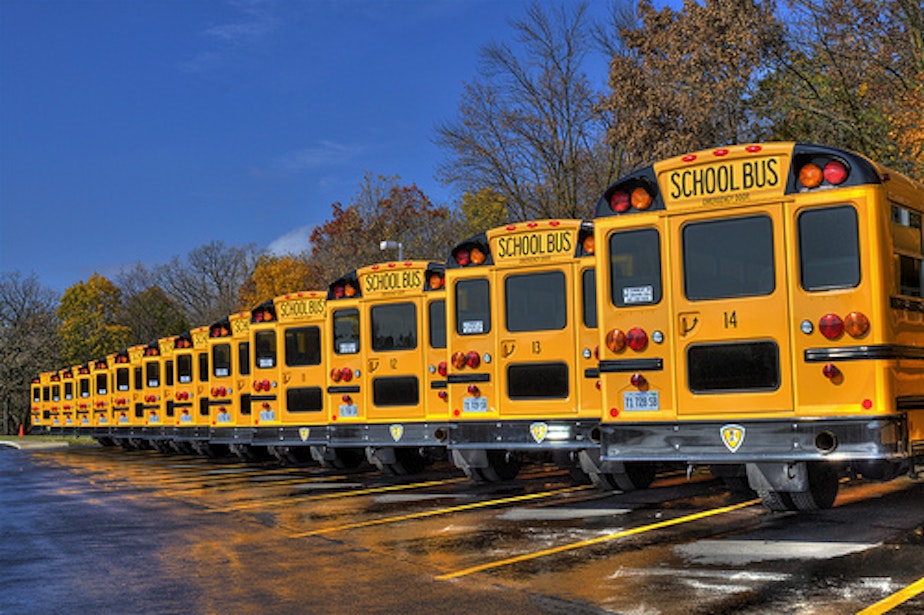Seattle Schools to stop using fossil fuels in 20 years

Seattle Public Schools aims to stop using fossil fuels in the school district’s buildings and buses in the next 20 years.
Though that timeline is half as ambitious as a citywide one adopted by Seattle in 2019, backers say it’s the first school district in Washington to commit to phasing out fossil fuels.
The Seattle School Board passed the resolution to end fossil fuel use by 2040 in the district’s electricity, heating, cooling, cooking, and transportation unanimously Wednesday.
If everyone cuts back on their climate-wrecking carbon pollution, “we won’t have to worry about the ice melting in Antarctica and everything being underwater,” Robert Eagle Staff Middle School sixth grader Keyasha Rogers testified before the school board.
“Nothing is more urgent than this,” Emerson Elementary third grade teacher Vanessa Meraki said.
RELATED: Seattle bans natural gas in new buildings
This year’s third graders are the class of 2030, which Meraki called the deadline year for changes the world needs to make “to avoid climate change hellscape.”
“This represents the minimum [Seattle Public Schools] must do to meet its moral obligation to this moment,” Meraki said.
Cascadia Elementary third grade teacher Sarah Egger-Weiler said her students, many of whom are angry and terrified about climate change, learn by positive example.
“My students do not appreciate when I teach them something that I may not be following myself,” Egger-Weiler said.
No one spoke against the resolution.
The school district estimates that converting 8 million square feet of its buildings from fossil fuel heat to electricity will cost $1.3 billion, though the two-decade time frame makes any cost estimate extremely imprecise.
Offsetting the price tag would be immediate health benefits as soon as electric vehicles and equipment replace fossil-fuel infrastructure, according to the resolution.
Backers said communities near busy school bus routes and bus yards as well as students riding diesel-powered buses would benefit from breathing fewer sooty particulates.
While the resolution’s supporters spoke of the need for bold action, its timeline is less demanding than one that already, in theory, governs life in the city.
To help fend off climate catastrophe, Seattle’s Green New Deal committed the city in 2019 to ending citywide carbon pollution by 2030.
Long-term climate promises made by governments in Seattle and elsewhere have often failed to translate to real-world results.
As every student or parent knows, there’s a big difference between saying you’ll do your homework and actually doing it. Seattle city leaders have an 18-year record of promising national leadership on climate and failing to deliver the promised pollution reductions.
Washington state’s emissions increased more than 6% during climate-activist Jay Inslee’s first six years as governor despite his climate efforts and a 2008 law requiring the state to reduce emissions by 2020.
“The [Seattle] school board has passed green resolutions before that have resulted in limited changes,” Sierra Club organizer Ruth Sawyer said in an email. “We wanted to make sure this one really resulted in long-term, concrete changes.”
The new resolution requires the creation of an advisory body that will come up with a district decarbonization plan by September 2022.
More imminently, natural gas or other fossil fuel infrastructure is prohibited in all school construction or renovation projects starting in April, and only electric-powered equipment can replace any fossil-fuel-powered equipment in need of replacement.
Several speakers said the resolution was only a start.
“We need to adopt a sustainability analysis tool, similar to the racial equity analysis tool we use, that is applied to every decision in every department,” Meraki said.
“The smallest things can have a giant impact,” Rogers, the sixth grader, said.




